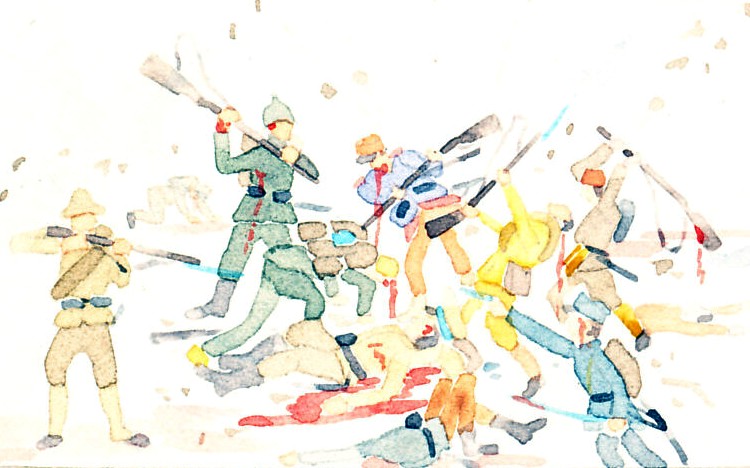French and Montengrin troops on Mount Lovćen. From Mount Lovćen, Montenegrin artillery were able to bombard the Austro-Hungarian naval base at Cattaro, and began doing so in August, 1914. They conducted an artillery duel with Austro-Hungarian guns on land and on the armored cruiser Kaiser Karl VI, which was joined by three more battleships in September. The French supported the Montenegrins, landing four 12 cm and four 15 cm naval guns in September and moving them into position in the following month, opening fire on October 19. With the addition of SMS Radetsky, the Austro-Hungarian battery was able to overcome the Montenegrin position, which was abandoned by November, 1914. From a painting by Alphonse LaLauze, 1915.

Batailles des Monts Lowsen, 29 Août 1914.
Français et Monténégrins.
Signed A[lphonse] LaLauze, 1915
Battle of Mount Lovćen, August 29, 1914
French and Montenegrins
Other views:
Larger, Back
